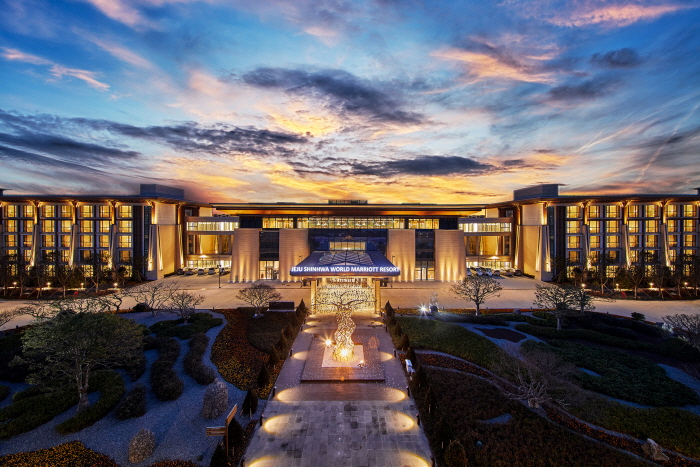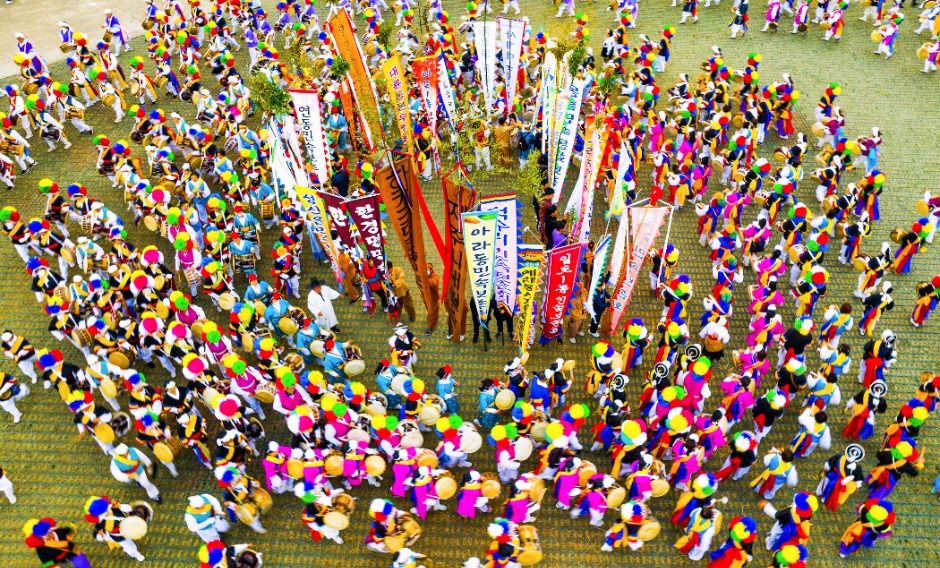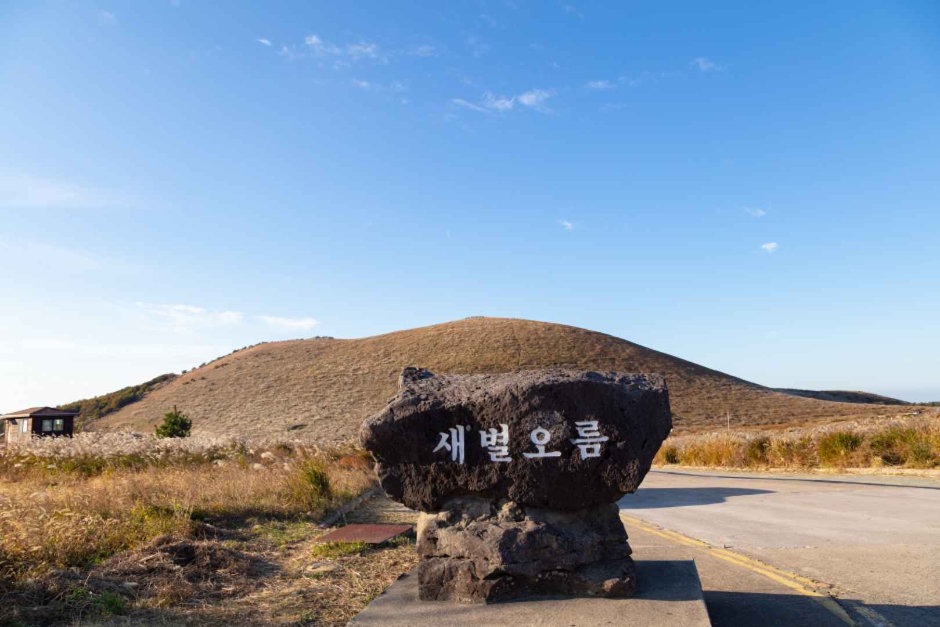maje - Shinsegae Simon Jeju Outlets Branch [Tax Refund Shop] (maje 신세계사이먼 제주아울렛)
19.1Km 2024-06-26
38, Sinhwayeoksa-ro 304beon-gil, Andeok-myeon, Seogwipo-si, Jeju-do
-
Jeju Shinhwa World Marriott Resort (메리어트관 제주신화월드 호텔 앤 리조트)
19.3Km 2024-04-02
38 Sinhwayeoksa-ro 304beon-gil, Andeok-myeon, Seogwipo-si, Jeju-do
+82-1670-8800
The Jeju Shinhwa World Marriott Resort, a premier Marriott establishment centrally located within Jeju Shinhwa World, offers 527 guest rooms across its East and West Buildings. With 30% of these being connecting rooms, the resort caters excellently to groups of friends traveling together. The premium rooms and those at higher rates on the 6th floor are especially distinguished by their hinoki wood baths, lending an extra touch of luxury. The resort’s "Mosil" area, inspired by the iconic Seongsan Ilchulbong Tuff Cone of Jeju, features a 25-meter lap pool, complemented by both indoor and outdoor swimming areas, a children's pool and a playground, and an outdoor pool area. Wellness facilities include a spa with seven treatment rooms, a fitness center of practical size, and a sauna, ensuring guests can maintain health and relaxation. Additionally, the resort boasts the Sky on 5 Grill, known for its splendid views, and a sophisticated fine dining restaurant that showcases world-renowned chefs.
Jeju Sanbangsan Carbonate Hot Springs (제주 산방산탄산온천)
19.5Km 2024-03-11
192, Sagyebuk-ro 41beon-gil, Andeok-myeon, Seogwipo-si, Jeju-do
+82-64-792-8300
Jeju Sanbangsan Carbonate Hot Springs is a carbonate hot spring that contains the main carbonic acid components (free carbonic acid, bicarbonate, sodium, etc.). It is said that this enhances blood circulation, lowering blood pressure and reducing the burden on the heart. It is also beneficial for skin care and fatigue recovery, making it a perfect place to relax after a long day of exploring Jeju. There is an indoor bath designed with glass inside as well as an outdoor open-air bath, so visitors can bathe while enjoying the view of Sanbangsan Mountain and the deep blue sea.
Jeju Fire Festival (제주들불축제)
19.9Km 2025-03-05
San 59-8 Bongseong-ri, Jeju-si, Jeju-do
+82-64-728-2753
Jeju Fire Festival is a representative cultural festival related to Jeju's culture of livestock care. Held every March at Saebyeoloreum Volcanic Cone, the night sky lights up with fiery red. The festival features a media façade show, torch march, fire show, and more as well as various programs and food trucks.
Manor Blanc (마노르블랑)
19.9Km 2024-02-20
46 Iljuseo-ro 2100beon-gil, Andeok-myeon, Seogwipo-si, Jeju-do
Manor Blanc is a café that features a beautiful garden adorned with hydrangeas in summer, pink muhlies in fall, and camellias in winter. From late fall to winter, the café also offers citrus picking experiences. Their drink menu includes homemade hallabong ade, green tangerine ade, and Jeju lemon ginger ade. Visitors can enjoy the views of Sanbangsan Mountain and Seogwipo Sea from the second floor of the café.
Saebyeol Oreum Volcanic Cone (새별오름)
20.0Km 2025-10-23
San 59-8 Bongseong-ri, Aewol-eup, Jeju-si, Jeju-do
+82-64-740-6000
Located in Bongseong-ri, Aewol-eup, Jeju-si, Saebyeol Oreum Volcanic Cone is a parasitic volcano cone set alone that looks like a lonely star (Saetbyeol in Korean) in the night sky, giving this volcano cone its name. Based on the highest south peak, small peaks continue in the northwest direction, forming an oval-shape. The oreum is a mid-sized oreum among 360 oreums on Jeju Island and it features a stunning view from the peak of the beautiful ridges connecting to one another.
![maje - Shinsegae Simon Jeju Outlets Branch [Tax Refund Shop] (maje 신세계사이먼 제주아울렛)](http://tong.visitkorea.or.kr/cms/resource/42/3313042_image2_1.jpeg)




 English
English
 한국어
한국어 日本語
日本語 中文(简体)
中文(简体) Deutsch
Deutsch Français
Français Español
Español Русский
Русский